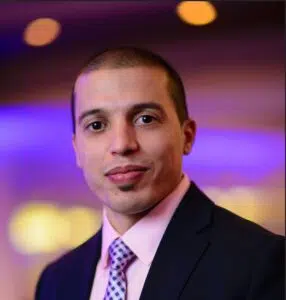Table of Contents
Introduction
The United States is a diverse country in terms of both culture and language. But how many languages does the average American speak?
Most Americans speak only one language—English. However, bilingualism is on the rise due to immigration, education, and multicultural communities. On average, Americans speak just one language, while the average number of languages spoken in the U.S. remains lower than in other multilingual nations.
Currently, more than 350 languages are spoken in America, including Spanish, Chinese, Tagalog, and Vietnamese. This diversity reflects the country’s immigrant history and its evolving multicultural identity.
The Top Languages Spoken in America
The most common languages in America tell the story of its diverse heritage. Here’s a list of the top languages spoken in the U.S:
- Vietnamese – Spoken primarily in Texas and California.
- English – The primary language for business, government, and daily communication.
- Spanish – With over 42 million speakers, it’s the most common language after English.
- Chinese (Mandarin and Cantonese) – Spoken in major urban areas like New York and San Francisco.
- Tagalog – Common in Filipino-American communities, especially in California and Hawaii.
This linguistic diversity raises an important question: how many languages do Americans speak on average? While most speak only English, bilingualism is growing across states due to global connectivity and education.
Why More Americans Are Becoming Bilingual
The average number of languages spoken in the U.S. is increasing because of cultural exposure, education, and global interaction. Being bilingual offers mental, professional, and social advantages.
- Educational Initiatives: Many schools now encourage language learning, supporting language diversity by offering classes in Spanish, French, and Mandarin.
- Economic Advantages: Bilingual employees are highly valued, especially in fields like healthcare, customer service, and international business.
- Cultural Preservation: Many immigrants maintain their heritage languages, adding to the cultural diversity of language in America.
So, even though the average American speaks one language, the desire to learn more is growing. Compared globally, how many languages does the average person speak is around two to three — showing room for growth in the U.S.
The Role of Native American Languages in U.S. Culture

Native American languages hold a unique place in American native culture. Though endangered, there is a growing movement to preserve these languages through education and community programs. Some critical points about Native American language preservation include:
- Cultural Significance: These languages are vital to maintaining the heritage and traditions of indigenous communities.
- Endangered Status: Only around 169 indigenous languages are still spoken, with many at risk of disappearing.
- Revitalization Efforts: Language programs and preservation initiatives are helping to keep these languages alive.
This focus on Native American language preservation reflects the U.S.’s broader commitment to honoring and retaining its diverse linguistic heritage.
Key Influences on Language Use in the U.S.
Several factors shape the average languages spoken in America:
- Immigration: The U.S. welcomes speakers of Spanish, Chinese, Tagalog, and Arabic.
- Education: Schools support bilingual learners through ESL and dual-language programs.
- Workforce Demand: Companies increasingly seek bilingual employees, especially in healthcare and business.
While how many languages does an average American speak may still hover around one, this number is rising as multiculturalism expands.
The Impact of Language Diversity on U.S. Society

So, how many languages does the average American know compared to the global average? Worldwide, people typically speak two or three languages, while most Americans speak one. This contrast highlights the need for stronger language education programs.
Language diversity benefits U.S. society by encouraging cultural exchange, innovation, and inclusivity. As more Americans learn new languages, the country becomes better connected globally.
Related: Cultural Differences in Spanish-Speaking Countries in Latin America
Conclusion
The average American may speak one language, but the United States is home to over 350 spoken languages — a testament to its diversity. Whether through heritage, immigration, or education, America’s multilingual landscape is constantly evolving. Understanding how many languages do Americans speak reminds us of the importance of preserving and promoting linguistic diversity.
Related: Why Some Languages are Dying and What We Can Do to Save Them
Call to Action
At Translation Excellence, we are committed to supporting linguistic diversity through our translation and interpretation services. We connect people across languages, bridging cultural gaps and making communication accessible to all.
FAQs:
- What country speaks 500 languages?
- What percentage of Americans can speak a second language?
- How many languages can an average person speak?
- What’s the hardest language to learn?
Related: Top 7 Fastest Growing Languages and Their Global Impact


